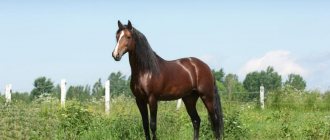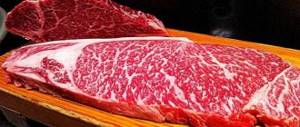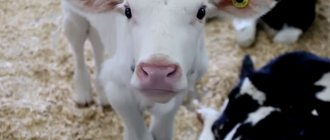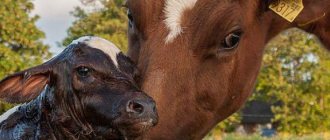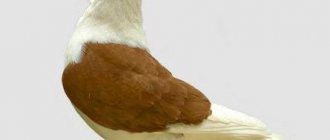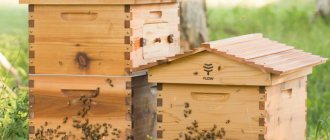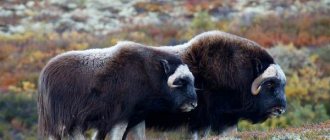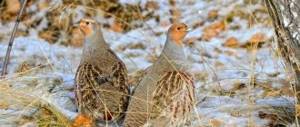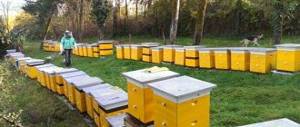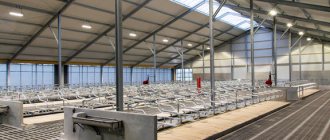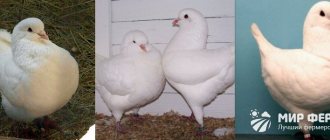Horse riding equipment
It is often tempting to purchase saddles, bridles and bits before purchasing the horse itself. But we advise you to wait and adjust all of the above specifically to your animal. This will not only provide comfort when riding, but will also save you from unnecessary expenses. On the contrary, it is recommended to buy grooming equipment in advance so that everything you need is already waiting for the horse at home.
- Saddle assembly.
It is best to buy the first saddle assembled. It includes:
- saddle
- girth
- tangles
- stirrups
This will guarantee that all additional elements will fit the selected saddle and you will not have to separately purchase elements that do not fit. The most popular models for beginners:
- universal saddles - suitable for any type of riding and equestrian sports
- officers - have a time-tested design, developed specifically for arming the Russian army
- Bridle with a rein.
Used to control a horse. The modern market offers a wide variety of bridles of various models to suit every taste and budget. Read more in our article “Types and structure of bridles” - Trezel.
It is inserted into the animal's mouth and serves to control movement. For restive horses, strict bits are chosen, which place more pressure on the toothless edge of the mouth and soft palate. For flexible animals, a thicker bite is suitable. - Saddle pad and sweat pad.
Absorb sweat and have shock-absorbing properties, preventing chafing and unnecessary pressure on the animal's back.
Protective equipment
To ensure that the animal feels comfortable at any time of the year and is not exposed to hypothermia, special ammunition was developed. In addition to protecting against weather conditions, it is used to prevent injuries and sprains.
blanket
A universal invention that gives the animal a feeling of warmth and dryness. It is actively used during the transportation of horses; in the stable it saves from sudden temperature changes. It is mainly made from warming wool fabric. It is fixed on the body of the horse using fasteners.
At its core, a blanket is a special protective blanket that is used for heating. Since constant grooming and regular washing reduce the horse's protective fat layer, it needs additional protection. Any type of blanket is produced taking into account the climate and physiological characteristics of the horse. The variety of these bedspreads is comparable to the number of dresses in a fashionista’s closet. It is recommended to purchase several types of blankets for all occasions. The emphasis should be on three basic varieties: a winter version, a deo modification for sweat absorption, and a “home” version for stables.
Levadnaya. This variety is used in situations where it is necessary to provide the horse with dry conditions. Made from compacted synthetic material that prevents the penetration of air and moisture. On the other hand, this fabric, thanks to its specially designed structure, allows moisture formed on the surface of the animal’s body to escape without creating conditions for overheating.
Levada blanket keeps the horse dry
Night. Made from reliable, durable fabrics with a specific lining. Recently, materials that do not require frequent washing are gaining popularity. In the autumn, it prevents the formation of undercoat, which the animal usually grows for the winter. This is a very important point, since overly thick hair makes caring for the animal quite problematic.
Night blankets prevent the formation of winter undercoat
New Zealand Levadna. Belongs to the group of heavy capes. It is made on the basis of tarpaulin, and received its name thanks to the country in which it was developed. Since it is quite heavy, special straps are used to secure it.
Wag and Gladiator. Made from synthetics. They are popular due to their specific cut: in addition to the body, they also protect the horse’s neck.
The Wag and Gladiator blanket protects the horse's neck
Konyushennaya. Designed for animals kept in stalls. Their main function is to protect horses' fur from dust and dirt.
Stable blanket protects the horse from dust
Melton. A cozy “cape” made of wool. It accumulates heat well, but due to this property it is quite heavy in weight, and cleaning it is quite problematic.
Wool blanket accumulates heat
In addition to these varieties, there are waterproof, special fly blankets, and there are even protective covers with holes for the eyes and ears.
Bandages
To protect horse limbs, cotton bandages are used to protect them from sprains. In the cold season, they are good as a warming agent.
During training, knitted or crepe bandages are used, about 8 cm wide. They must be wound very carefully on special linings
To ensure free blood flow, it is very important not to squeeze the limbs. You should also avoid any gaps where dirt can get in.
Bandages prevent horse limbs from sprains
Saddle pad
Its second name is a saddle cloth, which is a bedding under the saddle that protects the horse’s back from namin.
A saddle pad (saddle pad) protects the horse’s back from namins
Care equipment
- Halters.
They are used to secure the horse during various manipulations, from bathing to medical procedures. - Chumbur.
Serves as an addition to the halter. - Brushes.
There should be at least 6 of them in the arsenal of a beginning horseman:
Also, a halter is indispensable if it is necessary to transfer an animal over short distances. Halters are made from a variety of materials and color combinations. The main thing is that the chosen model fits your animal perfectly.
Indispensable in the summer. Not only protects against annoying flies and mosquitoes, but also prevents infections transmitted by insects.
Horse handling equipment
The most important components for coordinating a horse's actions are the bridle and bit. This is the foundation with the help of which the rider carries out basic commands, shows the course and sometimes even pacifies the obstinate quadruped. In combination with the leg, vocal signals, changes in body position, they are the very lever that can subjugate an unruly animal.
The bridle and bit are the most important components of ammunition
bit
To control, the rider uses the physiological characteristics of the horse's jaw. His gums are characterized by gaps that are not filled with teeth, which is where the bit is placed. They are constructed of 2 metal rings and a bite, through which the front part of the animal is controlled, allowing it to slow down or give the command to stop completely. The gnawing puts pressure on the tongue, lips and the entire jaw as a whole.
Position of the bit in the horse's mouth
The bits are made mainly from iron, copper, steel, and other metals. A bit made of metal is called a snaffle. It is attached to the bridle and straps by rings and is differentiated from each other by the distance between the rings: from 12 to 14 cm.
Recently there has been a trend to use rubber bits, which are more gentle and great for horses with sensitive teeth.
It is very important that the bit is the right size and that the animal reacts to it without complaint, especially to taste. The horse should chew them with pleasure. During this process, a nerve impulse occurs that passes into the lingual-pectoral muscle and promotes its relaxation.
It is advisable to choose a snaffle individually for the horse, since it comes in different shapes and severity. You should not buy it just because of its external characteristics. This object is placed in the horse's mouth, and if it does not fit, it can cause the animal not only discomfort, but also severe pain. The best option would be the softest possible bit: the thinner the bit, the stricter the bit should be.
The bits are selected taking into account each specific horse
Bridle
In practice, bridles are used for a wide variety of purposes. But the main function of the leather straps that make up its basis is to hold the bit. Its main components are the bit and reins, which give the rider the opportunity to transmit signals to the horse.
Main types of bridles:
| View | Device Features | Application area |
| Snaffle bridle | In this variety, the portable belt does not need to be used, but the use of a snaffle is mandatory. | It is used in all types of riding, but is especially popular during horse training. Moreover, it is suitable for any stage - both initial and final. |
| Mouthpiece headband | Makes it possible to use two types of bits and reins, which allows you to give clearer commands to the animal. | Dressage. |
| For runs | Combination of standard bridle and halter. The reins and cheek straps can be easily removed. If necessary, it is possible to fasten the reins to a portable belt, which greatly simplifies the riding process and relieves the animal of excessive pressure. | Long-term hikes. |
| Hackamore | The headband is without a bit and does not involve the use of iron. This device is worn on the hollow of the chin, the bridge of the nose and the back of the head. Its advantage is that it does not affect the animal's mouth. | Riding young horses, training, long-term riding work. Actively used in situations where the animal has an oral injury. |
Appearance of the bridle
How to put on a bridle correctly
Should be worn on the left side of the animal:
- unfasten your seat belts;
- calm the animal and take the bridle in your left hand and the rein in your right;
- the horse’s nose should be placed in the right hand, with the reins placed on the neck;
- Using your left hand, press the iron firmly to your lips, gently and carefully trying to place it in your mouth. As compensation for the inconvenience caused, you can treat the animal with a piece of sugar;
- lift the bridle up with your right hand and put on the neck strap;
- fasten the chin strap, leaving space between the strap and the animal's head;
- fasten the capsule.
How to put a bridle on a horse
Halter
It looks like a bridle without a bit. The halter is used primarily for bringing animals out of the pen and saddle; it is also convenient to keep the horse on a leash. During these manipulations in the stables, belts are attached to it - the so-called decoys, which help fix the horse in a level position. It is located on the animal’s head and is used in combination with a chumbur.
They are made from leather or thick ribbon. There is also a separate variety designed specifically for holiday displays. It is distinguished by its bright colors, the use of decorative materials and the use of all kinds of decorations.
A halter is used to lead a horse out of the paddock
Reins
The rein is a leather strap fastened to the bit rings and allowing the rider to have contact with the horse's mouth. It is designed to coordinate the front part of the animal's body and is one of the main means for controlling the horse. With its help you can set the direction of movement, stop the horse or force it to slow down. It also allows you to adjust the position of the animal's head and neck.
The reins are the main means of controlling a horse.
Martingale
To prevent the horse from throwing its head back high, a martingale was designed. These additional reins are a very important detail, since the horse's polling can cause damage to the rider's health and injury. One side of it is fixed to the girth, and in the chest area it diverges into 2 belts with rings through which the reins are threaded. This design allows you to fix the animal's head in the required position.
Appearance of martingale
The martingale prevents the horse from throwing back its head and causing injury to the rider.
Chambon
This is an oblong belt of various types of tie-downs, which is fixed to the horse’s head in order to secure the desired position of the head during training. It is attached to the girth and snaffle, passing under the strap located in the cheek area.
It does not restrain neck extension, unlike the martingale, but only makes it possible to remove excessive load from the surface of the animal’s back. Its main area of use is horse dressage.
Appearance of chambon
Chambon reduces the load on the horse
Saddle
This device protects the horse's back. The rider's comfort level is second in importance. Surprisingly, without using a saddle, there is more pressure on the horse's body than with it. The saddle allows you to evenly distribute the body weight throughout the animal's body. Choosing the right saddle is the most important aspect when learning to ride. When adjusting it, you should take into account the length of the tree, the height of the withers, and many other components. This explains the fact that the saddle is usually made to order.
Some of the most common types of saddles are:
- English type;
- Asian type;
- Western type;
- Spanish type;
- lady's saddle.
Asian saddle
English saddle
Side saddle
Spanish saddle
Western saddle
The choice of saddle depends, first of all, on the tasks that you set for the horse. Overcoming obstacles, dressage, regular walking - each of these events requires a special saddle. Dressage, show jumping or other events – there are many options. One-size-fits-all and multi-functional saddles should be avoided - one saddle should only be suitable for one specific purpose. An important point is the choice of the manufacturer. If your financial situation allows you to purchase a quality saddle, pay attention to companies such as Hermes, Prestige and Stubben.
As a rule, it is sold without the necessary accessories, so it is necessary to purchase harnesses according to the length of the rider’s legs, stirrups according to the size of the foot and a girth according to the volume of the horse’s chest. It is advisable that the stirrups be fairly weighty - this nuance will make horse riding much easier.
Prices for special saddles for horses
Special saddle for a horse
Stirrups
They are an integral part of the saddle and are designed to secure the rider's legs and maintain balance while riding. Initially they looked like loops, but were very uncomfortable and dangerous. Nowadays, their shape can be very diverse, but the main purpose remains the same: to provide support for the foot.
Stirrups are needed to secure the rider's legs.
Whip
The second name for this item is stack. It refers to the auxiliary elements of horse control. Its main function is to force the rider's command. In official equestrian sports, their use is strictly limited, sometimes even banned. Its length varies from 75 to 125 cm. Strikes are allowed only with barely perceptible pats.
In order to reduce the force of impact, a special cracker is attached to its tip. It must be held in the right hand, and while riding a horse, it should be lowered vertically.
In official equestrian sports the use of a whip is strictly prohibited.
Prices for equestrian goods
Whip
Beach
This oblong whip, reaching a length of up to 2 m, was conceived for the purpose of “educational” work carried out with a horse in the arena. It consists of a wooden handle and a bowstring, woven from the thinnest straps. As a rule, a special knot is made at its end, which makes a sound similar to a click. It was not invented for the purpose of beating an animal. Its main and only function is to set the direction.
It is often used to correct the behavior of obstinate and lazy horses.
The whip is often used to correct the behavior of obstinate and lazy horses.
Spurs
One of the most important controls on a riding horse is where the rider places his feet.
They vary in length and design, with their help the rider acts on the sides of the animal. Nowadays, it is not allowed to use spurs equipped with a wheel, since they can easily injure the body of the animal.
With the help of spurs, the rider influences the sides of the horse
Feeding equipment
Those who live in the village probably already have pitchforks, wheelbarrows and shovels that are indispensable in horse breeding. If not, you can buy them at any garden store. It is easy to use old buckets and barrels for feeders and drinking bowls, after making sure that no toxic substances were stored in them, they are well cleaned and do not have sharp edges.
But there is equestrian equipment that is purchased in specialized stores. Let's list everything you need in order.
- Water trough or large buckets.
- Container for food.
- Water heater. Indispensable for residents of cold areas.
How to make it yourself
Ammunition can be purchased in specialized stores or made yourself. Let's give some tips on making the most necessary elements of horse equipment.
Sweatshirt
To sew a saddle pad, you must first take measurements so that you can make a pattern. If possible, it is most convenient to outline a ready-made, purchased sweatshirt. Otherwise, you need to take into account that the product must be larger than the size of the saddle. The standard size of a saddle pad is 70x90 cm.
Important! When making a pattern, you need to take into account that the inner layer should be 10 mm smaller than the others around the entire perimeter, and the top layer should be 10 mm smaller than the bottom along the central seam (the thinnest place). Baste all parts of the pattern and try on
Additionally, iron the product and sew it on a machine. Hide the edge seams behind the tape
Baste all the pattern pieces and try them on. Additionally, iron the product and sew it on a machine. Hide the edge seams behind the tape.
bridle
To sew a bridle, it is very important to take the correct measurements:
- from one corner of the mouth to the other through the cheeks and behind the ear - add 10 cm for loops, to adjust the length, 7-10 cm for buckles;
- distance across the forehead between the cheek straps, plus 10 cm extra for loops;
- between the same points only downwards, through the ganaches and plus 10 cm for the buckle (for the chin strap).
Read more about how to make a bridle for a horse with your own hands and how to put it on correctly.
blanket
It can be sewn from cotton fabric. The size depends on the dimensions of the animal's body. The standard dimensions are 2x2.4 m. In addition to the fabric, you will need 3 carabiners, 3 rings, 150 cm of wide elastic, about 10 m of braid with a minimum width of 20 mm.
It will be useful for you to learn how to make a blanket for a horse with your own hands.
You can use a solid rectangle of the desired size, or sew it from two smaller ones. The resulting canvas is folded in half, and a neckline cut out is 0.6 m long and 0.2 m high. All corners of the blanket are rounded. The edge is finished with bias tape. From the edge of the neckline, at a distance of approximately 1.4 m, a strip is sewn perpendicular to the back line, where the elastic will be threaded. Both edges should be open. The length of the strip is 0.3 m. An elastic band of 0.4–0.45 m is pulled into it, which is sewn into a ring. This is necessary to fix the blanket on the tail.
In the girth area, a double elastic band 0.4 m long with a carabiner is sewn to the lower edge of the blanket on one side, and a ring for the carabiner is sewn on the opposite end of the product. Carabiners with an elastic band and rings for fastening the product around the neck are also sewn onto the front edges of the blanket.
Saddle
It is extremely difficult to make this element of horse harness yourself. The task can be simplified by having a tree (frame) from an old saddle. If there is no such element, then the creation of the saddle will have to begin with its manufacture. It is made of wood, plywood or fiberglass.
We advise you to learn more about the types of saddles for horses, as well as how to make a saddle with your own hands.
Measurements are taken:
- at the highest part of the withers;
- at the location of the anterior curved edge of the saddle;
- end of the withers (low back);
- end of the saddle (at the level of the 18th spine);
- arch of the back from the withers to the 18th thoracic spine.
Using a chisel and a plane, we create a copy of the layout from a piece of wood. We create a bend using a jigsaw and sandpaper. When the tree is ready, you can begin to do the interior upholstery. For this, foam rubber (polyurethane foam) is used: it is cut to shape, if necessary from several layers. You can take plywood as the base of the saddle - it is nailed to the tree and foam rubber is attached to it using nails so that they go into the tree. For external upholstery, leather is most often used, less often - burlap. The tree is sheathed with the selected material. It is better to purchase ready-made girths.
Care items
In order for an animal to have a well-groomed, beautiful appearance, it needs to be looked after. For this you need the following items:
- rough mittens used to remove dirt;
- a scraper that allows you to clean wool efficiently;
- brush used for wet cleaning;
- a brush, thanks to which you can add shine to the wool;
- sponges used to clean mucous membranes;
- scrapers to remove excess moisture from wool;
- bucket;
- brush for applying oils to hooves;
- a hook with which dirt and small stones are removed from the hooves;
- rubber scraper for massage.
Important! Shoes that only have smooth soles are suitable for riding. Because when falling, the rider can get caught in the grooved sole, and then the consequences can be disastrous.
Every day, manufacturers produce new grooming items and accessories, however, the above list is a base and should be in every stable.
